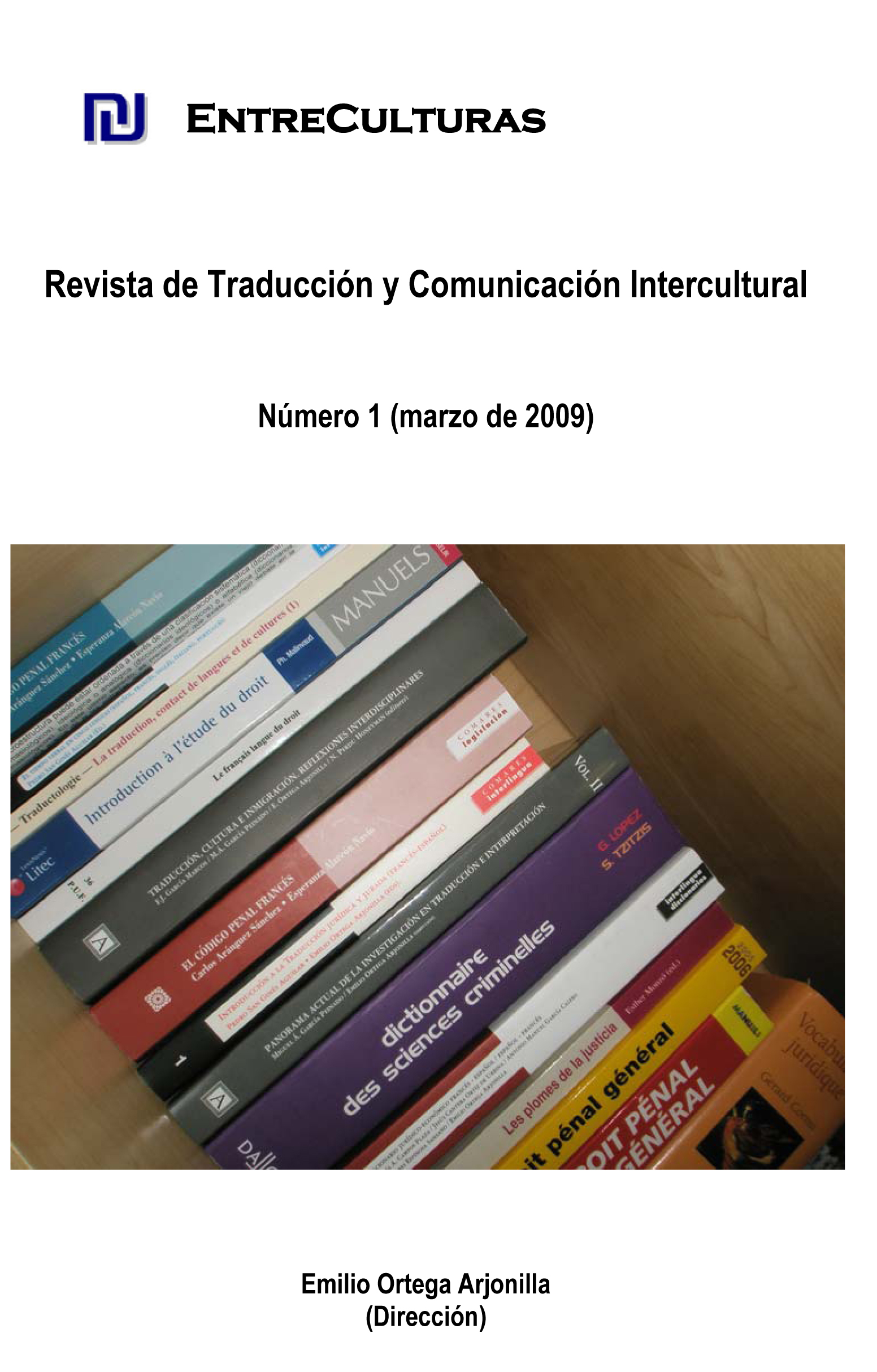PELHAM DE BULWER-LYTTON Y LA ESTÉTICA DEL DANDY EN LAS ‘SILVER FORK NOVELS’ (PELHAM BY BULWER-LYTTON AND THE AESTHETIC OF THE “DANDY” IN THE ‘SILVER FORK NOVELS’)
DOI:
https://doi.org/10.24310/Entreculturasertci.vi1.11821Keywords:
Victorian period, silver fork novelAbstract
This article deals with an analysis of a narrative subgenre in the Victorian England between 1816 and 1840: the “Silver Fork Novel”. They are works that describe the smartness and the bright of older times imaginatively, anticipating the genre of the romantic novel, focusing and portraying the aesthetic that characterized the aristocratic class, instead of focusing on moral issues. Its influence would be maintained in the novels of the middle of the Victorian period, through the 40’s, reaching the 50’s and 60’s, when the novelist would begin to write “anti-silver fork” novels, denouncing the snobbism of the genre. The term “silver fork” was used derogatorily, being coined by William Hazlitt in 1827, in an article published in The Dandy School.
Downloads
Metrics
References
ADBURGHAM, ALISON (1983): Silver Fork Society: Fashionable Life and Literature from 1814 to 1840. Londres, Constable.
BARBEY D’AUREVILLY (1997): Du dandysme et de George Brummell, préface de Frédéric Schiffter. París, Éditions Payot & Rivages.
BULWER-LYTTON, SIR EDWARD GEORGE D. (1892): Pelham; or, Adventures of a Gentleman. The Works, 25, New York, P. F. Collier and Son.
CAMPBELL, JAMES L. SR. (1986): Edward Bulwer-Lytton. Boston, Twayne's Studies in Short Fiction Series.
CHRISTENSEN, ALLAN CONRAD (1976): Edward Bulwer-Lytton: The Fiction of New Regions. Athens (Georgia), The University of Georgia Press.
— (ed.) (2004): The Subverting Vision of Bulwer Lytton: Bicentenary Reflections. Newark, University of Delaware Press.
DAHL, CURTIS (1978): “Bulwer-Lytton” en H. Ford, George (ed.): Victorian Fiction: A Second Guide to Research. Nueva York, Modern Language Association, 28-33.
DALZIEL, MARGARET (diciembre 1963): “The Newgate Novel, 1830-1847 by Keith Hollingsworth (Book Review)”. Victorian Studies, 7 (2), 215-216.
ESCOTT, T. H. S. (1910): Edward Bulwer, First Baron Lytton of Knebworth; a Social, Personal, and Political Monograph. Londres, George Routledge & Sons.
GROSVENOR MYER, VALERIE (1988): “Bulwer-Lytton, Edward George Earle Lytton, First Lord Lytton (1803-1873)” en Mitchell, Sally (ed.): Victorian Britain An Encyclopedia. Nueva York, Garland, 103.
HARVEY, SIR PAUL (1983): The Oxford Companion to English Literature. 4th edition revised by Dorothy Eagle. Oxford University Press.
HAZLITT, WILLIAM (1930-1934): The Complete Works of William Hazlitt. Londres, Dent (21 vols., ed. P. P. Howe).
HUGHUES, WINIFRED (1992): “Silver Fork Writers and Readers: Social Contexts of a Best Seller”. Novel, 25, 328-347.
LANE, CHRISTOPHER (verano 2002): “Bulwer's Misanthropes and the Limits of Victorian Sympathy”. Victorian Studies, 597-625.
MITCHELL, LESLIE G. (2003): Bulwer Lytton: The Rise and Fall of a Victorian Man of Letters. Londres/Nueva York, Hambledon and London.
MOERS, ELLEN (1960): The Dandy: Brummell to Beerbohm. Londres, Secker and Warburg.
MULVEY-ROBERTS, MARIE (2001): “Edward Bulwer-Lytton” en Gothic Writers: A Critical and Bibliographical Guide. Westport, CT, Greenwood Publishing Group, 83-89.
— (2001): “Fame, Notoriety and Madness: Edward Bulwer-Lytton Paying the Price of Greatness”. Critical Survey, 13 (2), 115-134.
OAKLEY, J. W. (1 junio 1992): “The Reform of Honor in Bulwer's Pelham”. Nineteenth-Century Literature, 47.
POE, EDGAR ALLAN (julio 1835): “Notice of Bulwer's The Student”. American and Daily Advertiser, Baltimore.
— (febrero 1836): “Review of Rienzi”. Southern Literary Messenger, 198-201.
— (abril 1841): “Review of Night and Morning”. Graham's Magazine, 197-202.
— (noviembre 1841): “Review of The Critical and Miscellaneous Writings of Sir Edward Bulwer Lytton”. Graham's Magazine.
POLLIN, BURTON R. (septiembre 1965): “Bulwer-Lytton and 'The Tell-Tale Heart'”. American Notes and Queries, 7-8.
? (diciembre 1996): “Bulwer's Rienzi as Multiple Source for Poe”. Poe Studies, 29.2, pp 66-68.
? (primavera 2000): “Bulwer-Lytton's Influence of Poe's Work, Especially for an Author’s ‘Preconceived Design’”. Poe Studies Association Newsletter XXVIII, 1, 1-3.
POSTON, LAWRENCE (VERANO 1998): “Beyond the Occult: The Godwinian Nexus of Bulwer’s Zanoni”. Studies in Romanticism, 131-161.
SPIES, GEORGE H. (1976): “Edgar Allan Poe's Changing Critical Evaluation of the Novels of Edward Bulwer-Lytton”. Kyushu American Literature, 17, 1-6.
WORTHNIGTON, HEATHER (2004): “Against the Law: Bulwer's Fictions of Crime” en The Subverting Vision of Bulwer-Lytton. Newark, University of Delaware Press, 54-67.
Downloads
Published
How to Cite
Issue
Section
License
All contents published in Entre culturas. Revista de traducción y comunicación intercultural are protected under the Creative Commons Attribution-NonCommercial-ShareAlike 4.0 International (CC BY-NC-SA 4.0) license. All about this license is available in the following link: <http://creativecommons.org/licenses/by-nc-sa/4.0>
Users can copy, use, redistribute, share and exhibit publicly as long as:
- The original source and authorship of the material are cited (Journal, Publisher and URL of the work).
- It is not used for comercial purposes.
- The existence of the license and its especifications are mentioned.
There are two sets of authors’ rights: moral and property rights. Moral rights are perpetual prerogatives, unrenounceable, not-transferable, unalienable, imprescriptible and inembargable. According to authors’ rights legislation, Entreculturas. Revista de traducción y comunicación intercultural recognizes and respects authors moral rights, as well as the ownership of property rights, which will be transferred to University of Malaga in open access. The property rights are referred to the benefits that are gained by the use or the dissemination of works. Entreculturas. Revista de traducción y comunicación intercultural is published in an open access form and it is exclusively licenced by any means for doing or authorising distribution, dissemination, reproduction, , adaptation, translation or arrangement of works.
Authors are responsable for obtaining the necessary permission to use copyrighted images.





7.png)
